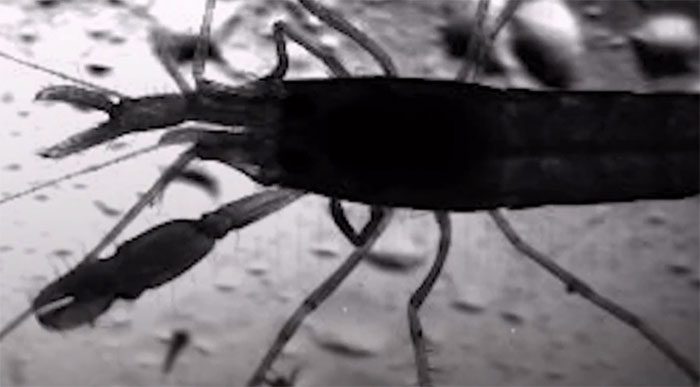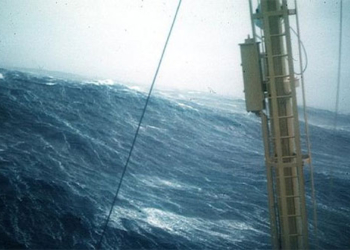At around one month old, the young snapping shrimp can snap its claws to create shock waves that stun enemies, even at speeds 20 times faster than their parents.
The juvenile snapping shrimp Alpheus heterochaelis can snap its claws underwater as fast as a bullet, according to a report by Independent on March 1. A new study has been published in the journal Experimental Biology.
(Video: News.com.au)
Adult snapping shrimp use this technique to stun fish or passing threats. The snap releases a high-speed jet of water that tears through the water and creates a cavitation bubble that is not visible to the naked eye. This bubble then bursts. The action of the snapping shrimp generates a powerful shockwave, accompanied by a loud cracking sound and a small flash of light, to incapacitate opponents.
“We cannot see the bubble with the naked eye; it happens too quickly. But we can hear it when the bubble bursts,” said Jacob Harrison, the lead author of the study and a researcher at Georgia Institute of Technology in the United States.

The claw snap of the snapping shrimp.
The Alpheus heterochaelis snapping shrimp lives in the western Atlantic and the Gulf of Mexico. Adult shrimp can snap their claws at speeds up to 30 meters per second, with the entire process completed in less than a millisecond.
The new study investigates when this snapping technique develops in their life cycle. While still a graduate student at Duke University, Harrison collected four female egg-carrying shrimp from Beaufort, North Carolina. He then nurtured the newly hatched young and monitored their development. They began to snap their claws at around one month old.
Harrison used toothpicks to stimulate the shrimp, prompting them to perform the snapping action. He recorded over 280 snaps and reconstructed 125 of them. He calculated the acceleration of the claw during the snap, the energy expended, and the energy needed to produce the water jet.
The research shows that even the smallest shrimp—measuring just 1 millimeter in claw length and weighing only 0.03 milligrams—can sometimes produce a water jet and create a bursting bubble. Harrison calculated the acceleration of the upper claw when snapping down and was astonished to find it reached an acceleration of 580,000 m/s2—as fast as a bullet and twenty times faster than adult shrimp. However, he believes that juvenile shrimp will undergo several regular snaps before they can produce bubbles.





















































